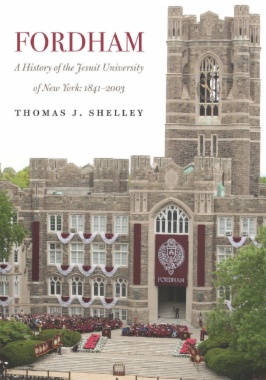

Based largely on archival sources in the United States and Rome, this book documents the evolution of Fordham from a small diocesan college into a major American Jesuit and Catholic university. It places the development of Fordham within the context of the massive expansion of Catholic higher education that took
place in the United States in the twentieth century. This was reflected at Fordham in its transformation from a local commuter college to a predominantly residential institution that now attracts students from 48 states and 65 foreign countries to its three undergraduate schools and seven graduate and professional schools with an enrollment of more than 15,000 students.
This is honest history that gives due credit to Fordham for its many academic achievements, but it also recognizes that Fordham shared the shortcomings of many Catholic colleges in the United States in the nineteenth and early twentieth centuries. There was an ongoing struggle between Jesuit faculty who wished to adhere closely to the traditional Jesuit ratio studiorum and those who recognized the need for Fordham to modernize its curriculum to meet the demands of the regional accrediting agencies.
In recent decades, like virtually all American Catholic universities and colleges, the ownership of Fordham has been transferred from the Society of Jesus to a predominantly lay board of trustees. At the same time, the sharp decline in the number of Jesuit administrators and faculty has intensified the challenge of offering
a first-rate education while maintaining Fordham’s Catholic and Jesuit identity.
June 2016 is the 175th anniversary of the founding of Fordham University, and this comprehensive history of a beloved and renowned New York City institution of higher learning will help contribute to celebrating this momentous occasion.